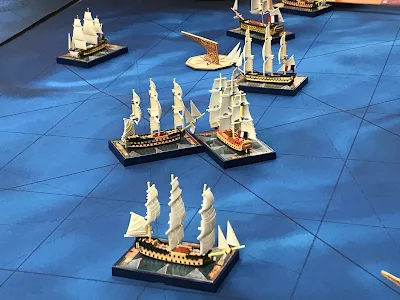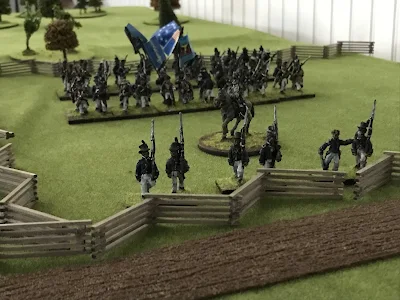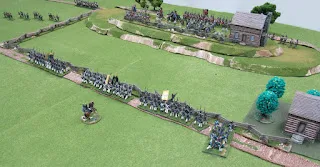In setting up the game I found the British/Canadian order of Battle to be a bit of a head ache. You find full sized regiments, detachments from regiments and individual companies on the field. You have detachments from various militia regiments formed together into a brigade which is really just a full sized regiment. All most confusing.
This is my best guess of the order of battle and how I will organized it. Remember that I use six stands of four figures as the average unit, eight stands of four figures as large, four stands of four figures as small, and two stands of four as tiny. Any stands of skirmish troops were split front and back into two half-stands, each pair counting as one stand for unit size. Please feel free to change based on your research or preferences.
Lieutenant General Drummond, commanding
RIGHT DIVISION (Major General Riall) AT LUNDY’S LANE :
2nd (Light) Brigade (Lieutenant Colonel Pearson)
Infantry Glengarry Light Infantry (Lieutenant Colonel Battersby): (376) Average unit
Incorporated Militia of Upper Canada (Lieutenant Colonel Robinson): (356) Average unit
Cavalry 19th Light Dragoons (Major Lisle): 95
Royal Artillery; medium
1st Militia Brigade (Lieutenant Colonel Parry) *
(300) Average unit
Native Allies (Captain Norton) (50) Tiny unit
Note: cavalry played little role in thus battle and can be omitted. But as wargamers love there cavalry charges and cannot help themselves here they are.
Lieutenant Colonel Morrison's Brigade:
1st (Royal Scots) Regiment (Captain Brereton): detachment (171) Small unit
8th (King’s) Regiment (Captain Campbell): (company 65) Tiny unit
41st Regiment (Captain Glew): (light company 60) Tiny unit
89th Regiment (Lieutenant Colonel Morrison): (425) Large uniy
Royal Artillery (Lieutenant Thomkyns/Tomkyns) Heavy guns
Royal Marine Artillery, Congreve Rocket Section (Sergeant Austin)
1st Brigade (Colonel Hercules Scott)
1st (Royal Scots) Regiment (Lieutenant Colonel Gordon):(400) large unit
8th (King’s) Regiment (Major Evans): detachment, (275)
103rd Regiment (Major Smelt) (635) large unit
104th Regiment (Captain Leonard): detachment (120) small unit
Artillery (Captain Mackonochie): medium guns
2nd Militia Brigade (Lieutenant Colonel Hamilton)** (250) average unit
*1st / 2nd / 4th / 5th Lincoln Militias: detachments 2nd York Militia (Major Simons)
**1st / 2nd Norfolk Militias: detachments 1st Essex Militia: detachment 1st Middlesex Militia: detachment Western (Caldwell’s) Rangers:




















.jpeg)


